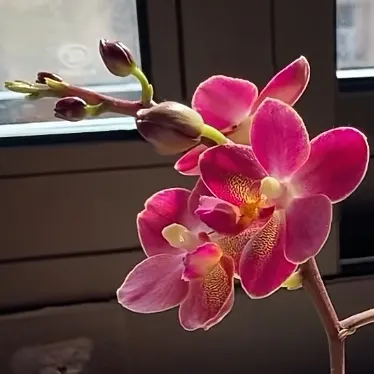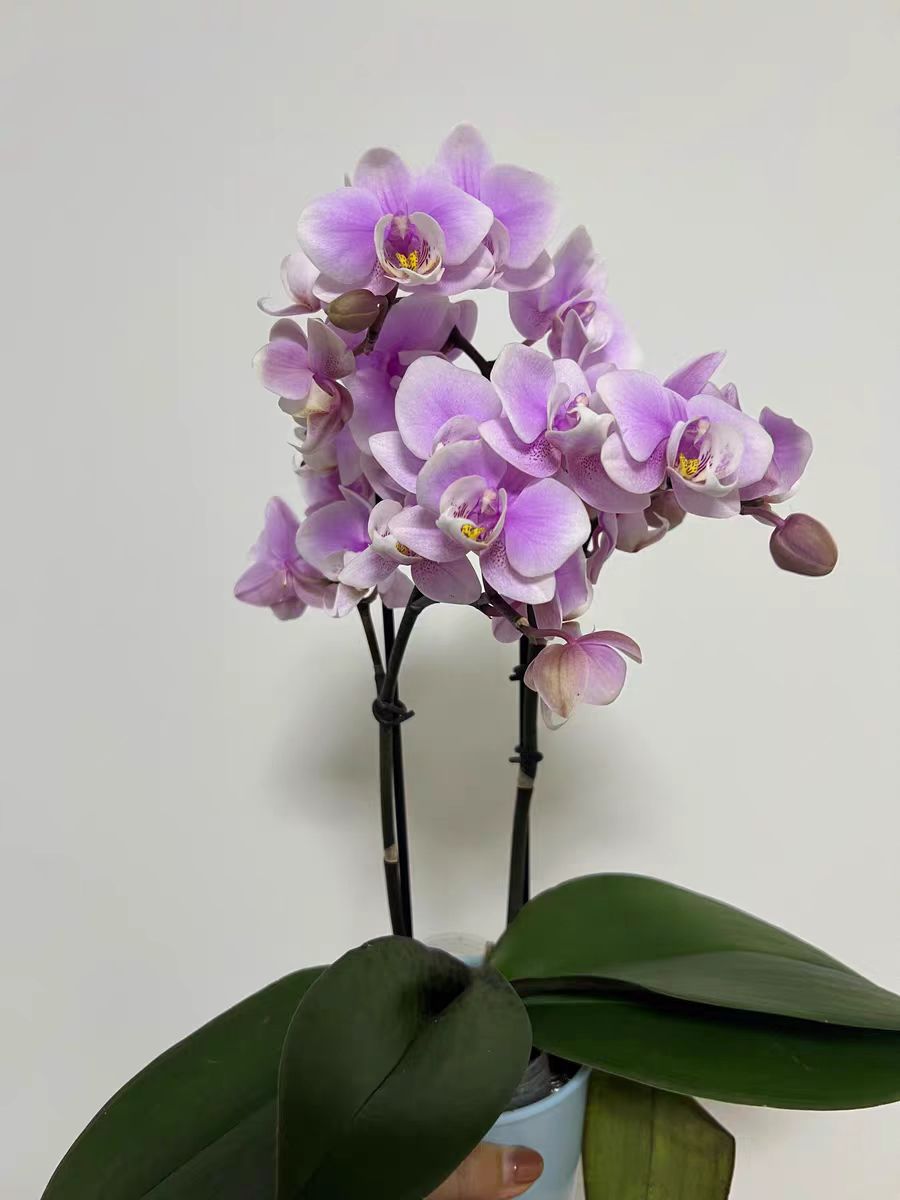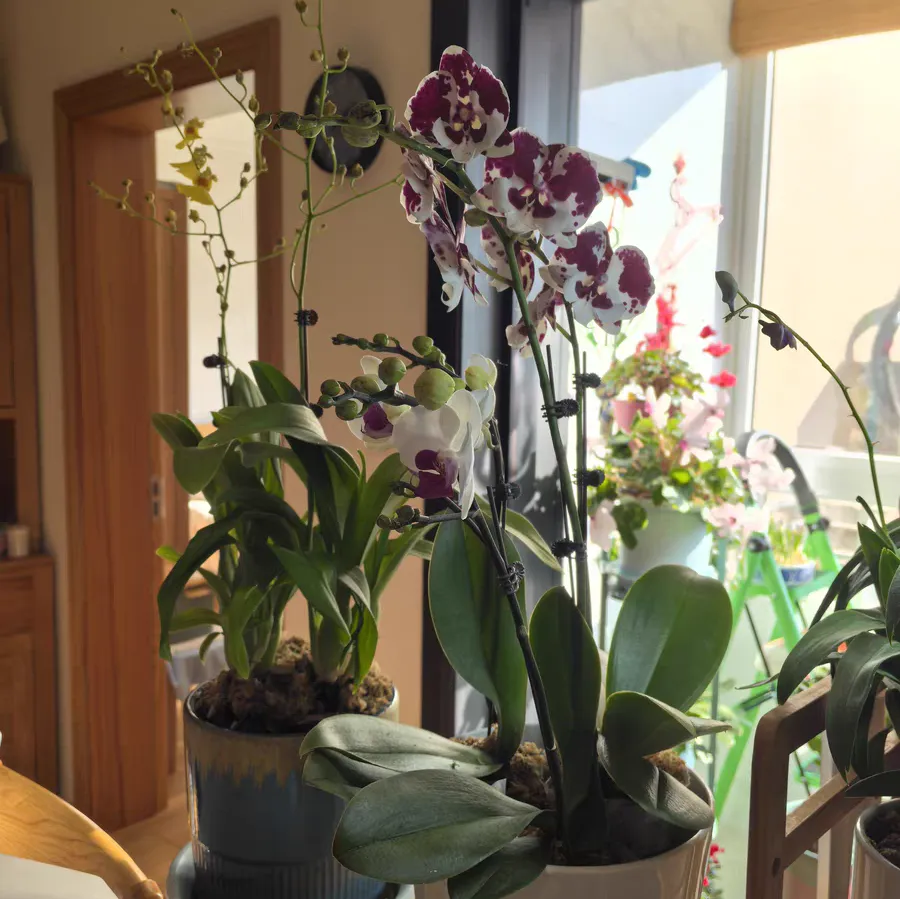Phalaenopsis Gong's Little Red-plum, which has been highly recommended by flower enthusiasts, is really a worthy purchase! Today, I'll introduce it to you in detail.
The flowers of Phalaenopsis Gong's Little Red-plum are extremely beautiful! The petals are in a bright yet not gaudy rose-red color, with delicate textures on them. The flower shape is round and plump, and the stamens in the center are golden and brilliant, contrasting with the rose-red petals, looking lively and cute. Among numerous Phalaenopsis varieties, its unique flower color and shape are particularly eye-catching.
Besides the visual enjoyment, Phalaenopsis Gong's Little Red-plum also emits a rich rose fragrance. This fragrance is not only pleasant but also spreads strongly, quickly filling the whole space and making people feel as if they were in a fragrant garden.
Maintenance Tips
Light: Phalaenopsis Gong's Little Red-plum prefers bright, filtered light and should avoid direct sunlight. It can be placed by the window or in the corner of the balcony where there is sufficient indoor light but no intense light.
Temperature: The suitable growth temperature ranges from 18 to 28 °C. During the hot summer, pay attention to ventilation to lower the temperature, and in winter, good warming measures should be taken. Flower enthusiasts in the north can move it indoors with heating in winter, but it should be kept away from heat sources such as radiators.
Watering: Adhere to the principle of "watering when the soil is dry and stopping when it's wet". Insert your finger about 2 - 3 centimeters into the soil, and water when it feels dry. Water thoroughly, but don't let water accumulate. Rainwater or tap water that has been left standing for 2 - 3 days is preferable for watering. In dry seasons, you can appropriately spray water around the plant to increase air humidity.
Fertilization: Apply a thin liquid fertilizer once every 2 - 3 weeks during the peak growth period. Before flowering, you can increase the application of phosphorus and potassium fertilizers, such as potassium dihydrogen phosphate solution. Dilute it and then spray it on the leaf surface or pour it around the roots. After flowering, also replenish fertilizers in time to help the plant recover.
Ventilation: A good ventilation environment is crucial and can reduce the occurrence of pests and diseases. It can be placed in a place with good air circulation, such as a room with frequently opened windows or in a shaded outdoor area with a gentle breeze.
Precautions
When repotting, operate carefully to avoid damaging the roots, and choose flowerpots of appropriate sizes and loose and breathable planting materials.
Regularly check the plants. If there are signs of yellow leaves, withered leaves or pests and diseases, deal with them in a timely manner.
How to Cultivate Phalaenopsis Gong's Little Red - plum?

Share with
Tagged in :




Leave a Reply